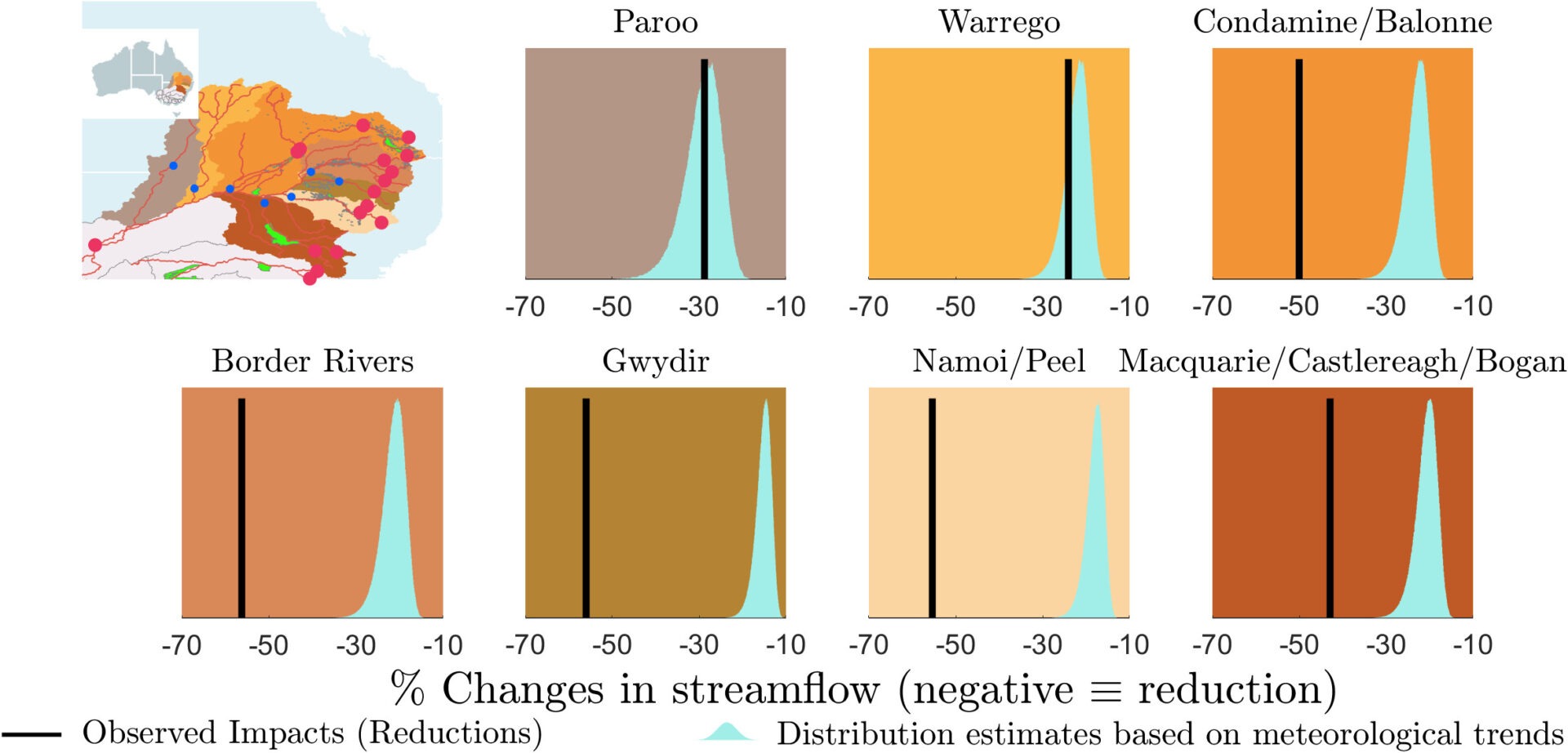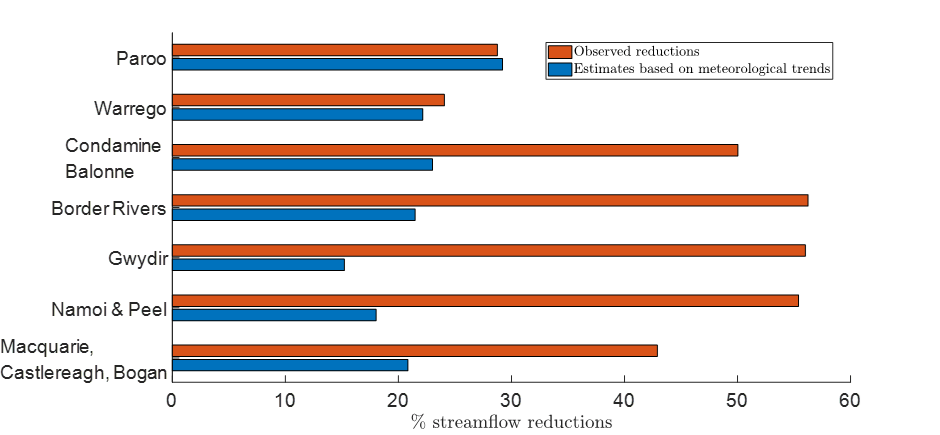Read time: 5 mins
Based on Effects of long-term meteorological trends on streamflow in the Northern Murray-Darling Basin (MDB), Australia 1981–2020, published February 2025, by Long Chu, John Williams, Ana Manero, and R Quentin Grafton.

Experts have analysed streamflow decline in the Northern Murray-Darling Basin over a 40-year period. Half the decline was climate change-related, but the rest was withdrawn – mostly for irrigation.
Read time: 5 mins
Based on Effects of long-term meteorological trends on streamflow in the Northern Murray-Darling Basin (MDB), Australia 1981–2020, published February 2025, by Long Chu, John Williams, Ana Manero, and R Quentin Grafton.
1
When river catchments in the Northern Murray-Darling Basin dry up, irrigators often blame meteorological droughts as the sole cause.
2
While catchments lost billions of litres of water per year due to a drying trend between 1981 and 2020, research shows irrigated catchments lost the most and that excessive water extractions is a key problem.
3
Water extractions and reallocation policies need to be urgently revised to protect the Darling River.
The Murray-Darling Basin is geographically divided.
In the north, seven key catchments collect rain from the tropics and feed the Darling River. In the south, the Darling meets the Murray, which is fed by its own set of catchments. The Murray collects snowmelt and rain from the Australian Alps, while the Darling relies on rain alone, some of which comes from large cyclones.
The Murray-Darling Basin sustains the lives of millions of Australians. Farmers use the rivers to grow about $8 billion worth of food and fibre. With temperatures rising, there is less water available for everyone. When there isn’t enough water, it causes ecological havoc. Disasters including mass fish kills, wetland loss and mould blooms all damage the ecosystems and are caused by too much water being extracted in a water scarce world.
As a drying trend continues and droughts hit harder and more often, it is getting harder for to work out what’s happening.
That’s why experts at the Water Justice Hub at the Australian National University (ANU) compared the Paroo and Warrego catchments – from which virtually no water is extracted – to their irrigated counterparts. This allowed them to calculate how much stream flows have declined because of a drying trend and how much extra water was taken by irrigators between 1981 and 2020.


As part of their analyses, the researchers calculated how much water each catchment lost to a drying trend with the actual stream flows decline. They found:
In total, water extractions accounted for about half the decline in stream flow in irrigated catchments. Their findings confirm that excessive irrigation extractions are a key contributor to stream flow decline over and above any decline due to a drying trend.
The study highlights that current water extractions are unsustainable without further and severe damage to the Darling River and its catchments and the many ecosystem services that they provide. The problem is fixable if irrigation water extractions are suitably reduced in the next Murray-Darling Basin Plan.
Top image: Ken Griffiths/stock.adobe.com
"Drying trends associated with climate change are not solely responsible for the Darling River’s decline."